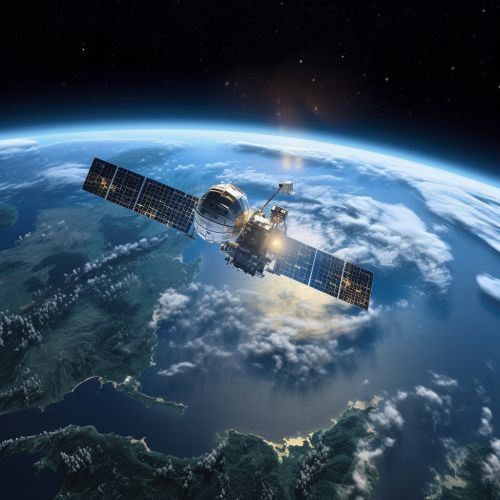The Role of Geoinformatics in Environmental Management
Introduction
Geoinformatics, a discipline that combines geosciences and informatics, plays a crucial role in environmental management. It involves the collection, analysis, interpretation, distribution, and use of geographic information to understand and resolve environmental issues. The field is characterized by the use of technologies such as Geographic Information Systems (GIS), Remote Sensing (RS), and Global Positioning Systems (GPS) to gather and analyze spatial data. This article delves into the role of geoinformatics in environmental management, highlighting its applications, benefits, and challenges.
Geoinformatics: An Overview
Geoinformatics is a multidisciplinary field that integrates geosciences and informatics to study the earth and its various phenomena. It involves the use of technologies such as GIS, RS, and GPS to collect, analyze, and interpret geographic information. Geoinformatics has wide-ranging applications in various fields, including environmental management, urban planning, disaster management, transportation, and agriculture.
Environmental Management: A Brief Introduction
Environmental management refers to the process of managing human interaction with, and impact on, the environment. It involves the implementation of policies and practices aimed at reducing human impact on the environment and promoting sustainable development. Environmental management encompasses various activities, including waste management, water management, air quality management, and biodiversity conservation.
Role of Geoinformatics in Environmental Management
Geoinformatics plays a pivotal role in environmental management. It provides tools and techniques for collecting, analyzing, and interpreting spatial data, which are crucial for understanding and resolving environmental issues. The following sections discuss the specific roles of geoinformatics in environmental management.
Data Collection
Geoinformatics technologies such as GIS, RS, and GPS are used to collect spatial data on various environmental parameters. These technologies enable the collection of data on a large scale and at a high level of detail, which is crucial for effective environmental management.
Data Analysis and Interpretation
Geoinformatics provides tools for analyzing and interpreting the collected spatial data. GIS, for instance, allows for the visualization, manipulation, and analysis of spatial data. It enables environmental managers to identify patterns and trends in the data, which can inform decision-making and policy formulation.
Environmental Monitoring
Geoinformatics is used for environmental monitoring, which involves the systematic collection and analysis of data to assess the state of the environment. RS, in particular, is used for monitoring various environmental parameters such as land use, vegetation cover, and water quality.
Environmental Impact Assessment
Geoinformatics plays a key role in Environmental Impact Assessment (EIA), which is a process of evaluating the potential environmental impacts of a proposed project or action. GIS is used in EIA to analyze the spatial data related to the project and its environment, and to predict and visualize the potential impacts.
Disaster Management
Geoinformatics is also used in disaster management, which involves the management of resources and responsibilities for dealing with all aspects of emergencies, particularly disasters. GIS and RS are used for disaster risk assessment, early warning, response planning, and damage assessment.


Benefits of Geoinformatics in Environmental Management
Geoinformatics offers several benefits in environmental management. These include:
Improved Decision-Making
Geoinformatics provides accurate and detailed spatial data, which can inform decision-making in environmental management. It allows for the identification of environmental issues, the assessment of their severity, and the formulation of appropriate responses.
Efficient Resource Management
Geoinformatics enables efficient resource management by providing tools for monitoring and managing resources. It allows for the identification of resource availability and usage patterns, which can inform resource allocation and conservation strategies.
Enhanced Environmental Protection
By providing tools for environmental monitoring and impact assessment, geoinformatics enhances environmental protection. It allows for the early detection of environmental issues and the implementation of measures to mitigate their impact.
Improved Disaster Management
Geoinformatics improves disaster management by providing tools for disaster risk assessment, early warning, and response planning. It enables the prediction of disasters, the assessment of their potential impact, and the planning of effective responses.


Challenges in the Use of Geoinformatics in Environmental Management
Despite its benefits, the use of geoinformatics in environmental management faces several challenges. These include:
Data Availability and Quality
The effectiveness of geoinformatics in environmental management depends on the availability and quality of spatial data. However, in many cases, there is a lack of reliable and up-to-date spatial data, which can limit the effectiveness of geoinformatics.
Technical Capacity
The use of geoinformatics requires technical capacity in terms of hardware, software, and human skills. However, in many cases, there is a lack of such capacity, particularly in developing countries.
Cost
The use of geoinformatics can be costly, particularly in terms of the acquisition of hardware and software, and the training of personnel. This can be a barrier to the use of geoinformatics, particularly in resource-poor settings.


Conclusion
Geoinformatics plays a crucial role in environmental management. It provides tools and techniques for collecting, analyzing, and interpreting spatial data, which are crucial for understanding and resolving environmental issues. Despite the challenges, the benefits of geoinformatics in environmental management are significant, and efforts should be made to overcome the challenges and maximize the benefits.
